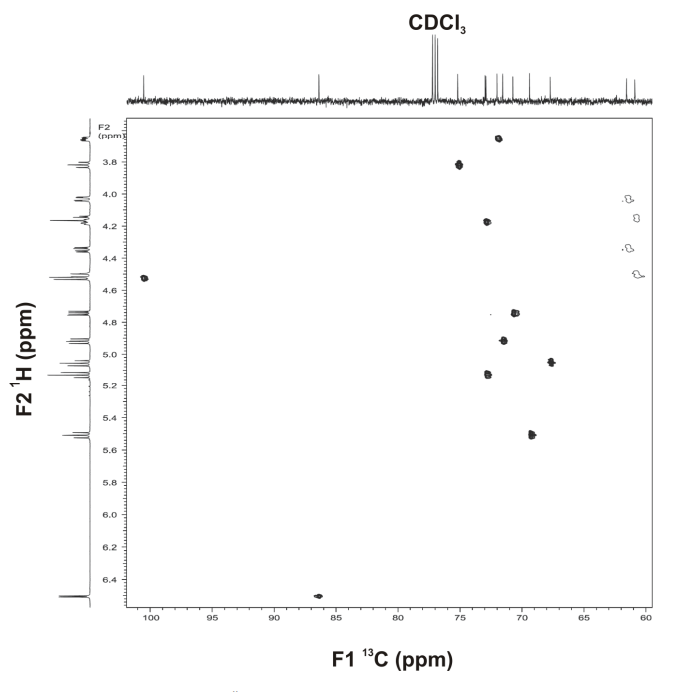Below you'll find the structure of the disaccharide and three 2D NMR spectra - COSY, HSQC, HMBC. I have to match the signals in the spectra to the nuclei that caused them. Answers to any subset of the following questions would be very helpful, but please explain like I'm 5:
How many protons would we expect the protons at A6 (highlighted in orange) to couple with?
Would we expect any coupling between the protons at A1 and B4 (in yellow)?
How many protons would we expect the protons at B6 (in green) to couple with? And are they considered axial or equatorial?
How many protons would we expect the proton at B1 (in blue) to couple with?
How do the heteronuclear spectra help us in this specific case? What is the crucial piece of information that they provide?
The structure:
COSY:
HSQC:
HMBC:






